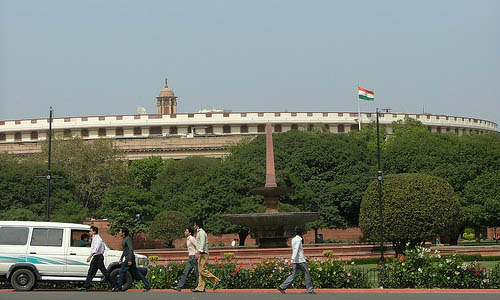
How rental housing benefits our cities
Bottom Line: If modern rental policy becomes a reality, we will…

Bottom Line: If modern rental policy becomes a reality, we will…

Bottom Line: 100% FDI in Indian e-commerce will open the…

The buzzword ‘Smart Cities’ has gained a lot more meaning now after the selection of the 20 top cities as Smart Cities out of a total of 98 through a competitive process of selection.

When the Government of India was announcing relaxation with FDI norms a day ahead of Diwali, many analysts thought it to be a Diwali gift for 15 core sectors that could also prolong the festive spirit for the real estate sector.

Track2Realty Exclusive: The property markets of the financial capital Mumbai and the political capital Delhi has always been exposed to the reality that it is the expat Indians, the working class professionals, who are the key demand drivers of property. However, in the last over a decade or so this outlook on the migrant work force has become a pan-India phenomenon.

Track2Realty: Smart Cities: The New Age Concept: The smart cities concept may not be a novel one, but in the Indian context it is definitely an idea whose relevance couldn’t have been better timed. The government has provided the thrust towards development of such cities, and needs to be now backed by a holistic concept.

Track2Realty: As we move closer to the Union Budget 2015–16, India’s real estate sector is hoping for certain key expectations to get implemented. Following the Government’s announcements of building SMART Cities in the Budget last year, the industry seeks more clarity on the exact definition of one in the Indian context, fund allocations for, and city/Greenfield location identification of such development. The implementation of such ambitions would ultimately result in national wealth creation—to help our cities become sustainable and livable urban centers of growth.

Track2Realty Exclusive: In 2014, India elected a new Central Government with absolute majority after three decades. The absolute majority helped in the formation of the strong government capable of taking decisive steps without much opposition. Likewise, several pro-business reforms were introduced to propel the infrastructure growth and to infuse a positive sentiment for the future of the real estate sector including revitalising Special Economic Zones (SEZs), development of several industrial corridors, creation of 100 smart cities, relaxation in FDI norms in real estate, supporting affordable housing sector, introduction of REITs and InVITs etc

Track2Realty: Currently, tier 2 and 3 cities account for a smaller proportion of operational shopping malls in India. However, with rising consumer aspirations and demand, the potential of these cities in terms of retail real estate is increasing. Both national and international retailers are expanding businesses in these cities, and this is fuelling demand for organized shopping spaces. While the major metro cities are continuing to launch bigger, international-standard malls, tier 2 and 3 cities are currently graduating to next level by initiation of shopping mall developments. There are notable exceptions to this – Lulu Mall in Kochi is, in fact, the largest mall in India as of today.

Track2Realty: The year 2014 has been quite fruitful for the real estate sector in terms of business sentiment, although the real effect of many of the policies and amendments announced in 2014 will take effect only in 2015. Starting from Union Budget FY2014-15, where affordable housing was considered on par with infrastructure, to relaxation of rigidities in the Land Acquisition and Real Estate Regulatory Bill, India’s new Prime Minister has been offering the India real estate sector consistent doses of energy.
